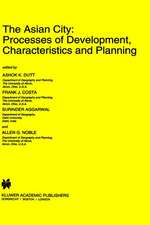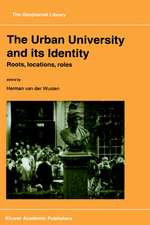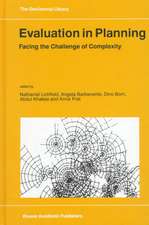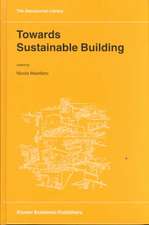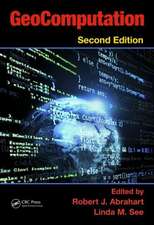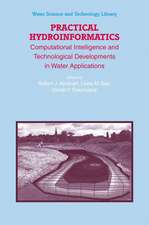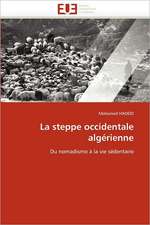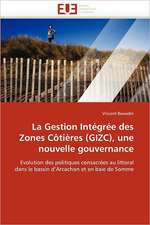Agent-Based Models of Geographical Systems
Editat de Alison J. Heppenstall, Andrew T. Crooks, Linda M. See, Michael Battyen Limba Engleză Paperback – 26 ian 2014
This book is relevant to researchers, postgraduate and advanced undergraduate students, and professionals in the areas of quantitative geography, spatial analysis, spatial modelling, social simulation modelling and geographical information sciences.
| Toate formatele și edițiile | Preț | Express |
|---|---|---|
| Paperback (1) | 2113.82 lei 6-8 săpt. | |
| SPRINGER NETHERLANDS – 26 ian 2014 | 2113.82 lei 6-8 săpt. | |
| Hardback (1) | 2119.14 lei 6-8 săpt. | |
| SPRINGER NETHERLANDS – 24 noi 2011 | 2119.14 lei 6-8 săpt. |
Preț: 2113.82 lei
Preț vechi: 2577.82 lei
-18% Nou
Puncte Express: 3171
Preț estimativ în valută:
404.53€ • 439.26$ • 339.80£
404.53€ • 439.26$ • 339.80£
Carte tipărită la comandă
Livrare economică 22 aprilie-06 mai
Preluare comenzi: 021 569.72.76
Specificații
ISBN-13: 9789400794832
ISBN-10: 9400794835
Pagini: 768
Ilustrații: VIII, 760 p.
Dimensiuni: 155 x 235 x 40 mm
Greutate: 1.16 kg
Ediția:2012
Editura: SPRINGER NETHERLANDS
Colecția Springer
Locul publicării:Dordrecht, Netherlands
ISBN-10: 9400794835
Pagini: 768
Ilustrații: VIII, 760 p.
Dimensiuni: 155 x 235 x 40 mm
Greutate: 1.16 kg
Ediția:2012
Editura: SPRINGER NETHERLANDS
Colecția Springer
Locul publicării:Dordrecht, Netherlands
Public țintă
ResearchCuprins
1: Mike Batty, Andrew Crooks, Linda See and Alison Heppenstall: Introduction.- Part 1: Computational Modelling: Techniques for Modelling Geographical Systems.- 2: Mike Batty: A Generic Framework for Computational Spatial Modelling.- 3: Mark Birkin and Linda Wu: A Review of Microsimulation and Hybrid Agent Based Approach.- 4: Sanna Iltanen: Cellular Automata in Urban Spatial Modelling.- 5: Andrew Crooks and Alison Heppenstall: Introduction to Agent-Based Modelling.- Part 2: Principles and Concepts of Agent-Based Modelling.- 6: David O'Sullivan et al: Agent-Based Models - Because they're Worth it?.- 7: Steve Manson et al: Agent-Based Modelling and Complexity.- 8: Mohammad Addou et al: Designing and Building an Agent-Based Model.- 9: Bill Kennedy: Modelling Human Behaviour in Agent-Based Models.- 10: The An Ngo and Linda See: Calibration and Validation of Agent-Based Models of Land Cover Change.- 11: Shah Jamal Alam et al: Networks in Agent-Based Social Simulation.- Part 3: Methods, Techniques and Considerations when Creating Agent-Based Models (Technical Issues) 12: Andrew Crooks and Christina Castle: The Integration of Agent-Based Modelling and Geographical Information for Geospatial Simulation.- 13: Kiril Stanilov: Space in Agent-Based Models.- 14: Hazel Parry and Mike Bithell: Large Scale Agent-Based Modelling: A Review and Guidelines for Model Scaling.- 15: Andrew Evans: Uncertainty and Error.- 16: Belinda Wu and Mark Birkin: Agent-Based Extensions to a Spatial Microsimulation Model of Demographic Change.- 17: Volker Grimm and Steven Railsback: Designing, Formulating, and Communicating Agent-Based Models.- 18: Ateen Patel and Andrew Hudson Smith: Agent Tools Techniques and Methods for Macro and Microscopic Simulation.- Part 4: Applications of Agent-Based Modelling: Micro to Macro.- Micro: 19: Nicolas Malleson: Using Agent-Based Models to Simulate Crime.- 20: Paul Torrens: Urban Simulation.- 21: Anders Johansson and Tobias Kretz: Applied PedestrianModelling.- 22: William Rand: Business Applications and Research Questions using Spatial Agent-Based Models.- 23: Kirk Harland and Alison Heppenstall: Using Agent-Based Models for Education Planning. Is the UK Education System Agent Based?.- 24: Dianna Smith: Simulating Spatial Health Inequalities.- 25: Rene Jordan et al: ABM of Residential Mobility, Housing Choice and Regeneration.- 26: D.C.Parker et al: Do Land Markets Matter? A Modelling Ontology and Experimental Design to Test the Effects of Land Markets for an Agent-Based Model of Ex-urban Residential Land-Use Change.- 27: Nicholas R. Magliocca: Exploring Coupled Housing and Land Market Interactions Through an Economic Agent-Based Model (CHALMS).- Macro: 28: Joana Barros: Exploring Urban Dynamics in Latin American Cities using an Agent-Based Simulation Approach.- 29: Joana Simoes: An Agent-Based/Network Approach to Spatial Epidemics.- 30: The An Ngo et al: An Agent-Based Modelling Application of Shifting Cultivation.- 31: Arnaud Banos and Cyrille Genre-Grandpierre: Towards New Metrics for Urban Road Networks. Some Preliminary Evidence from Agent-Based Simulations.- 32: Yan Liu and Yong Jiu Feng: A Logistic Based Cellular Automata Model for Continuous Urban Growth Simulation: A Case Study of the Gold Coast City, Australia.- 33: Ray Cabrera et al: Exploring Demographic and Lot Effects in an ABM/LUCC of Agriculture in the Brazilian Amazon.- 34: Tom Gulden and Ross A Hammond: Beyond Zipf: An Agent Based Understanding of City Size Distributions.- 35: Joel Dearden and Alan Wilson: The Relationship of Dynamic Entropy Maximising and Agent Based Approaches in Urban Modelling.- 36: Denise Pumain: Multi-Agent System Modelling for Urban Systems: The Series of SIMPOP Models.- 37 Mike Batty, Andrew Crooks, Linda See and Alison Heppenstall: Perspectives on Agent-Based Models and Geographical Systems
Recenzii
From the reviews:
“This edited book provides a comprehensive overview of the emerging area of ABM. Together, the chapters provide a rich source of bibliographic references, detailed illustrations to support visual understanding, and a logical presentation of the science behind ABM. … This book will be an essential reference text for academics, students, and decision makers who design and interpret spatial models to understand geographical processes.” (Suzana Dragićević, Environment and Planning B: Planning and Design, Vol. 40, 2013)
“A collection of papers that offer a comprehensive state-of-the-art of agent-based modelling (ABM) in geography. … an essential reference for any researcher in the field of ABM and geographical systems. Although a more than 700 pages book can scare everyone, the admirably collective effort to synthesize and provide an up-to-date overview of the most relevant methodological and applied works in the field is worth the challenge. Furthermore, it must be said that it can also be recommended to any reader interested in ABM … .” (José Manuel Galán, Journal of Artificial Societies and Social Simulation, Vol. 15 (3), 2012)
“This edited book provides a comprehensive overview of the emerging area of ABM. Together, the chapters provide a rich source of bibliographic references, detailed illustrations to support visual understanding, and a logical presentation of the science behind ABM. … This book will be an essential reference text for academics, students, and decision makers who design and interpret spatial models to understand geographical processes.” (Suzana Dragićević, Environment and Planning B: Planning and Design, Vol. 40, 2013)
“A collection of papers that offer a comprehensive state-of-the-art of agent-based modelling (ABM) in geography. … an essential reference for any researcher in the field of ABM and geographical systems. Although a more than 700 pages book can scare everyone, the admirably collective effort to synthesize and provide an up-to-date overview of the most relevant methodological and applied works in the field is worth the challenge. Furthermore, it must be said that it can also be recommended to any reader interested in ABM … .” (José Manuel Galán, Journal of Artificial Societies and Social Simulation, Vol. 15 (3), 2012)
Textul de pe ultima copertă
This unique book brings together a comprehensive set of papers on the background, theory, technical issues and applications of agent-based modelling (ABM) within geographical systems. This collection of papers is an invaluable reference point for the experienced agent-based modeller as well those new to the area. Specific geographical issues such as handling scale and space are dealt with as well as practical advice from leading experts about designing and creating ABMs, handling complexity, visualising and validating model outputs. With contributions from many of the world’s leading research institutions, the latest applied research (micro and macro applications) from around the globe exemplify what can be achieved in geographical context.
This book is relevant to researchers, postgraduate and advanced undergraduate students, and professionals in the areas of quantitative geography, spatial analysis, spatial modelling, social simulation modelling and geographical information sciences.
This book is relevant to researchers, postgraduate and advanced undergraduate students, and professionals in the areas of quantitative geography, spatial analysis, spatial modelling, social simulation modelling and geographical information sciences.
Caracteristici
The only book to deal specifically with ABM and geographical systems A comprehensive set of papers on background, theory, technical issues and applications of ABMs Presents a thorough background to the premise of ABM Discusses important technical issues such as how to handle errors, validate and visualise ABMs







